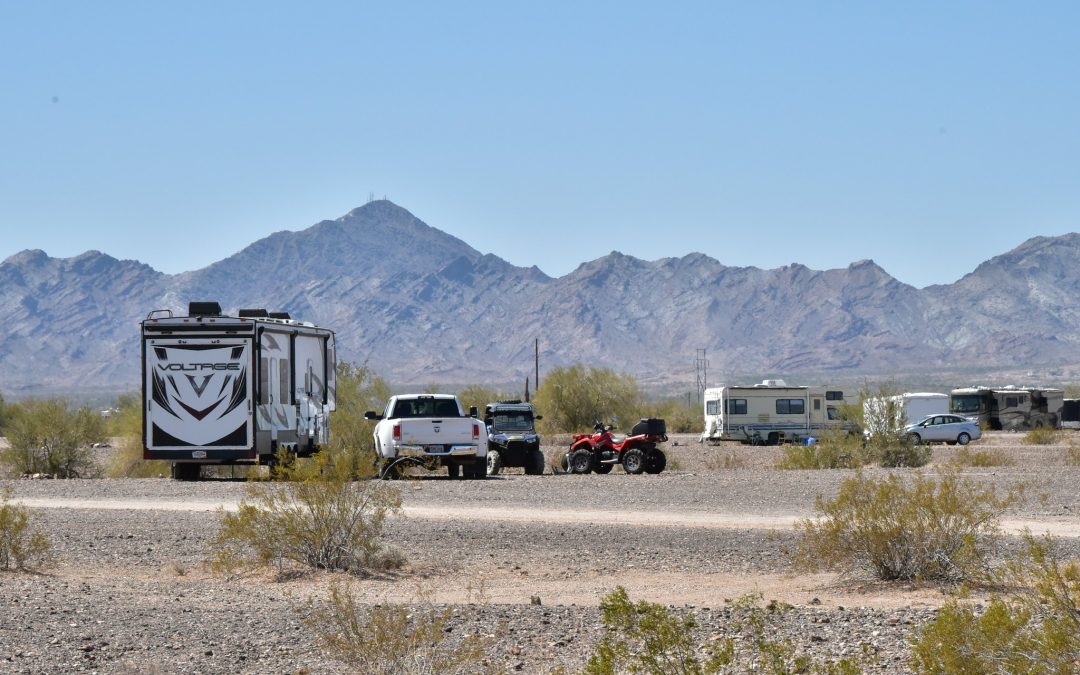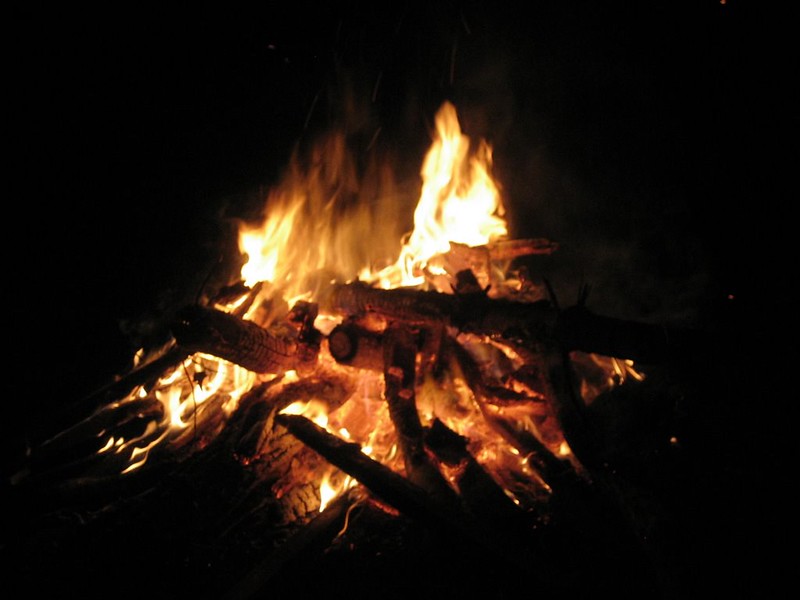Your Guide to Extended Stays on Public Lands
Your Extended Camping Oasis Awaits
Imagine trading crowded campgrounds for vast desert landscapes, swapping fleeting weekend getaways for months under starry skies. Long-Term Visitor Areas (LTVAs) offer this unique opportunity – a chance to immerse yourself in the beauty of public lands for extended stays. Managed by the Bureau of Land Management (BLM), these designated zones cater to the growing trend of long-term camping in the United States.
Beyond the Campfire – The Allure of LTVAs
LTVAs go beyond cost-effective camping, though extended stays certainly stretch your budget further. It’s about flexibility. Escape the rigid schedules of traditional campsites and embrace the freedom to roam. Forge connections with fellow adventurers, forming a vibrant community under the desert sun. Whether you’re a remote worker seeking solitude or a retiree chasing sunsets, LTVAs offer a canvas for your own nomadic adventure.
Where Adventure Beckons – Popular LTVA Destinations
LTVAs aren’t hidden secrets – they dot the deserts of Arizona and California, with iconic spots like Quartzite, La Posa, and Imperial Valley drawing thousands of seasonal residents. Accessibility varies, with some offering nearby amenities like gas stations and groceries, while others embrace the true off-grid experience. Research your options – find the LTVA that resonates with your desired level of remoteness and desired access to conveniences.

Burnt River Canyon via Bureau of Land Management Oregon and Washington / flickr
Unlocking Your LTVA Adventure
Permitting Your Way to Serene Stays
Before setting up camp beneath those picturesque desert skies, securing the right permit is crucial for responsible LTVA enjoyment. Here’s a breakdown of the two main permit types:
- Long-Term Permit: Your ticket to a seven-month stay from September 15th to April 15th, offering the ultimate extended camping experience.
- Short-Visit Permit: Perfect for shorter getaways or exploring different LTVAs, this permit grants access for 14 consecutive days within the same timeframe.
Obtaining permits is straightforward—visit the BLM website or local BLM offices to apply online or in person.
Know the Rules, Respect the Lands
LTVAs are havens for those seeking tranquility, but they also demand responsible stewardship. Key rules to remember:
- Waste Disposal: Proper waste management is crucial. Pack out all trash and utilize designated dump stations for wastewater.
- Stay Limits: Adhere to the permit’s designated stay durations to ensure fair access for everyone.
- Vehicle Restrictions: Respect LTVA-specific vehicle rules, which might limit the number of vehicles per campsite or restrict certain types.
- Quiet Hours: Remember, LTVAs are shared spaces. Embrace the peace and tranquility by honoring designated quiet hours.
These regulations aren’t mere formalities – they safeguard the delicate desert ecosystems and ensure a harmonious experience for all campers.

Bureau of Land Management Oregon and Washington from Portland, America, Public domain, via Wikimedia Commons
Gearing Up for Extended Bliss
Essential Kit for Camp Comfort
LTVA camping isn’t about roughing it – it’s about creating a cozy home amidst the wilderness. Here’s a curated list of must-haves for long-term stays:
- Self-Contained Unit: RVs, campervans, or trailers with built-in water tanks, waste systems, and power sources are ideal for extended stays.
- Power Essentials: Solar panels, generators, or battery banks keep your lights on, devices charged, and essential appliances running.
- Water Management: Water conservation is crucial. Stock up on ample water tanks and consider portable filtration systems for additional peace of mind.
- Off-Grid Cooking: Propane stoves, grills, or campfire cooking setups ensure delicious meals without relying on external power sources.
- Eco-Friendly Essentials: Pack biodegradable soap, reusable containers, and composting bins to minimize your impact. Leave only footprints, take only memories!
Staying Connected (and Safe)
While LTVAs offer a chance to disconnect from the hustle, staying connected for work, emergencies, or simply sharing your adventures is still possible. Consider these options:
- Satellite Internet: For remote areas, satellite internet provides reliable connectivity, albeit at a higher cost.
- Cell Phone Boosters: Enhance your cellular signal in areas with limited coverage.
- Public Wi-Fi: If available nearby, utilize public Wi-Fi spots for occasional connectivity needs.
Don’t forget safety essentials like first aid kits, fire extinguishers, and tools for emergency repairs. Inform loved ones of your whereabouts and have a plan for potential emergencies.

Image by Henning Sørby from Pixabay
Embracing the LTVA Lifestyle
Adventure Awaits Beyond Your Campsite
LTVAs aren’t simply places to park your RV – they’re gateways to boundless exploration. Here’s a glimpse of the diverse recreational opportunities awaiting you:
- Hiking and Biking: Scenic trails weave through rugged landscapes, offering opportunities for solitary hikes or exhilarating mountain biking adventures.
- Wildlife Watching: Keep your eyes peeled for desert dwellers like coyotes, roadrunners, lizards, and even elusive bighorn sheep.
- Stargazing: Far from city lights, LTVAs boast some of the darkest skies in the country, perfect for stargazing and witnessing the Milky Way’s grandeur.
- Fishing and Boating: Select LTVAs offer access to lakes or rivers, inviting you to cast a line or explore waterways by kayak or canoe.
- Seasonal Activities: Embrace the rhythm of the desert seasons – witness spring wildflower blooms, escape summer heat in cool oases, or gather around campfires during crisp winter nights.
From Camp Neighbors to Camping Family
LTVAs aren’t just about the scenery – they’re about the people. Discover a vibrant community spirit that transcends age and backgrounds:
- Shared Meals and Gatherings: Potlucks, campfire cookouts, and shared meals bring campers together, fostering friendships and exchanging stories.
- Community Events: From holiday celebrations to live music gatherings, LTVAs often host events that create a sense of belonging and shared experiences.
- Games and Activities: Bond over board games, nature walks, or shared hobbies, finding common ground under the desert skies.
- Support Networks: LTVA communities often extend a helping hand, offering advice, sharing resources, and creating a sense of safety and camaraderie.
Whether you’re seeking solitude or connection, LTVAs offer a unique blend of adventure, community, and personal growth.
Stewardship Starts with Every Campfire
Minimize Your Footprint, Maximize Enjoyment
LTVAs offer a chance to immerse ourselves in nature’s beauty, but this privilege comes with responsibility. Here’s how to minimize your impact and ensure these lands remain pristine:
- Adhere to Leave No Trace Principles: Pack out all trash, dispose of waste properly at designated sites, and avoid disturbing natural features.
- Tread Lightly: Stay on designated trails to minimize erosion and protect delicate vegetation.
- Conserve Water: Desert ecosystems are fragile. Use water wisely, conserve whenever possible, and opt for biodegradable soaps and cleaning products.
- Protect Wildlife: Respect wildlife habitats, keep pets leashed, and avoid feeding wild animals.
- Be Fire-Aware: Practice safe campfire habits and adhere to local fire restrictions.
Give Back to the Lands You Love
Stewardship extends beyond personal practices – it’s about actively contributing to the preservation of these cherished spaces. Consider these opportunities:
- Volunteer Programs: The Bureau of Land Management (BLM) often organizes volunteer projects to restore trails, remove invasive species, or conduct wildlife surveys.
- Educational Outreach: Share your knowledge with fellow campers about responsible camping practices and Leave No Trace principles.
- Support Conservation Organizations: Donate or volunteer with groups dedicated to protecting public lands and advocating for responsible land management, such as those listed on the Bureau of Land Management (BLM) website.
Through collective action, we can ensure LTVAs remain sanctuaries for adventure, community, and connection for generations to come.
Embrace the LTVA – Adventure Awaits
From star-studded nights to boundless adventures, LTVAs offer a unique canvas for your own nomadic chapter. Embrace the flexibility, forge a community under the sun, and explore landscapes that whisper untold stories. Remember, these public lands are a shared treasure, requiring responsible stewardship for future generations.
So, pack your spirit of adventure, gather your essential gear, and unlock the door to your LTVA dream. Unwind, reconnect, and discover the joy of a life less ordinary – where endless skies meet endless possibilities.
Resources
Embarking on your Long-Term Visitor Area (LTVA) adventure requires a bit of preparation and knowledge. To assist you in this exciting endeavor, we’ve compiled a list of essential resources. These websites are your gateways to understanding everything from obtaining necessary permits to practicing sustainable camping. Dive into these valuable sources to enrich your LTVA experience and ensure it’s as rewarding and responsible as possible. Let your journey into the heart of nature’s wonders begin!
- Bureau of Land Management (BLM) Official Website: This is the primary source for information about LTVAs, as they are managed by the BLM. Linking to the specific LTVA section provides direct access to official guidelines, permit details, and location information.
- Leave No Trace Center for Outdoor Ethics: This website is vital for promoting responsible camping and stewardship of natural areas. Linking to their principles and guidelines will enhance the credibility of your content on minimizing environmental impact.
- Recreation.gov: A comprehensive resource for exploring federal lands and waters, including LTVAs. It offers information on campgrounds, permits, and tips for outdoor adventures, aligning perfectly with the content’s focus on extended camping experiences.
- National Park Service (NPS) – Desert Camping Safety Tips: As LTVAs are often in desert environments, linking to the NPS’s desert camping safety tips can provide readers with valuable information on how to safely enjoy their time in these unique ecosystems.
- Tread Lightly!: This organization’s website offers guidelines and educational resources on responsible recreation outdoors. Linking to their tips and programs can add depth to your content on preserving the natural beauty of LTVAs.
Featured image by Bureau of Land Management (BLM) Arizona via flickr


